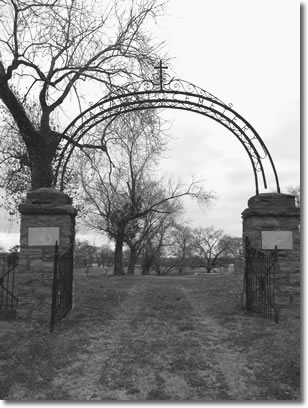Cemeteries

Segregated African American cemeteries were a fact of life in the post-Civil War American South. They still exist by the hundreds across the southern landscape. Their locations often help to define the boundaries of historic African American or other ethnic neighborhoods, sometimes creating the edges between white and black sections of town. The major difference between white and black cemeteries in the rural South is location. Historic white cemeteries lie often within the boundaries of the local historic district; they are prominent, even dominant landmarks within the city, town, or village. African American cemeteries are on the edges, and too many times they become forgotten, like the Benevolent Cemetery in Murfreesboro.
These cemeteries are more than remnants of the Jim Crow South; they also are sacred community space speaking to identity and culture. The gravemarkers and family plots enhance the cultural identity of these communities. Hundreds of burials lack grave markers of any sort. Most of the missing markers were probably wooden or, later in the mid-20th century, small metal markers installed by funeral homes that have been lost as cemeteries are kept clear by large, motorized mowers. Many other graves are marked by small triangular bits of stone, a type of early grave marker that older African American residents believe date to the era of slavery—the Pierce-Bond Cemetery in Sullivan County is a good example. Urban cemeteries, like Zion Cemetery in Memphis, Mt Olivet Cemetery in Jackson, and The Temple (Jewish) Cemetery in Nashville have more elaborate Victorian-styled tombstones.
African American cemeteries were typically located in close proximity to other community institutions as churches and schools, the large open space conveyed by a cemetery spoke to the history, culture, and separation of African Americans in a Jim Crow South. These distinctive, significant properties help us to delineate that “physical color-line” between the black and white worlds of the South noted by W.E. B. DuBois over 100 years ago.
Related Content
See more images of African American cemeteries in the Southern Places collection.